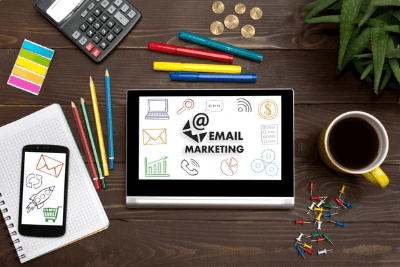Marketing Plan for Solar Energy Company in 2024
Jan 13, 2024
Note: This article will go through a comprehensive marketing plan for solar energy company growth. Following the below strategies will drive business for your company.
Introduction
As the industry surges forward, a marketing plan for solar energy company growth is crucial. With a strategic approach, a solar company can educate the public, effectively grow their customer base, and edge out the competition. Adapting marketing strategies to keep pace with the dynamic solar energy landscape is now a necessity.
In this guide, we walk through a marketing and growth strategy blueprint tailored for the solar energy sector's landscape in 2024. Here are the key areas we'll tackle:
Understanding the evolving market trends
Developing concise strategic marketing plans
Harnessing digital marketing strategies
Building and leveraging industry partnerships
Tracking key performance indicators (KPIs) for measuring marketing success
A Brief Overview on the Expected Solar Industry Growth
The solar industry is expected to grow in the coming years at a strong pace. So, the time is now for solar companies to establish the correct growth and marketing strategies and take advantage of the industry's new prominence. See below for some industry numbers:
The global solar energy systems market is projected to soar, with an anticipated compound annual growth rate of 15.7% from 2022 to 2030, reaching an impressive USD 607.8 billion by 2030. (source)
By the close of 2023, the U.S. alone is forecasting to install nearly 33 gigawatts of solar capacity. (source)
Globally, the momentum for solar power doesn't wane as the high scenario anticipates 402 GW new solar installations in 2023, with potential growth up to 800 GW in 2027. (source)
In 2024, forecasts suggest that solar's share of total electricity generation will push to 5.6% and then to 7.0% by 2025. source
The International Energy Agency (IEA) forecasts that solar PV capacity will nearly triple over the coming years, topping natural gas by 2026 and coal by 2027 (IEA).
Digital Marketing Strategies for Solar Companies
To effectively market in the solar industry, consider these digital strategies:
SEO (Search Engine Optimization): Climbing higher in search rankings to gain visibility.
Note: We help some of our customers with this (when we have capacity and if there's a good fit) - reach out to hi@subsync.ai or submit and inquiry (click here) to see if you are a good fit for this service.
Content Marketing: Sharing valuable insights about solar power to establish authority.
Social Media Marketing: Reaching out on platforms like Facebook and Instagram to connect with target audiences.
Email Marketing: Sending personalized campaigns to foster relationships with customers.
Remarketing: Capturing interest from previous website visitors to encourage return.
These are approaches that started growing in 2023 but are still not implemented by most solar companies. This means you have the opportunity to deep dive into these and beat out the competition. (source)
Most Important Strategy: Find and Nurture Local Leads
The most successful solar companies are able to first dominate their local market. This sets them up for the most success down the line. However, doing so has been difficult in the past. Now you can use software to generate local leads and nurture them. Tools like SubSync (sybsync.ai) offer an all-in-one platform to find local leads and ensure you stay in touch with them with email marketing, video marketing, texting, calling, and direct mail solutions (e.g., for flyers).
These types of tools also allow you to track all your leads and your history of communications with them in one centralized platform. As a result, no potential customers get lost in the shuffle. This is extremely important to make sure an optimized return on investment is enjoyed in terms of a marketing plan for solar energy company growth efforts.
Tracking the Success of a Digital Marketing Strategy for Solar Companies
Success in digital marketing initiatives is gauged by tracking KPIs:
Sales Growth and Annual Sales Growth
Customer Retention Rate
Lead Conversion Rate
Customer Acquisition Cost (CAC)
Customer Satisfaction Levels
Proper analysis of these KPIs will provide actionable metrics to judge the effectiveness of marketing strategies. Reach out to us directly to learn more or check out this informative article that deep dives into marketing KPIs: source
Track Niche Industry Trends when Creating a Marketing Plan for Solar Company Growth
Solar panel companies are increasingly using Instagram, LinkedIn, and other platforms for marketing purposes. (source)
Trends in digital marketing for 2023 highlight small business use of influencers, with authenticity taking the forefront on platforms like TikTok. (source)
For solar firms, capitalizing on these niche marketing strategies is crucial to outcompete competitors, because most companies don't implement these strategies or are not aware of them. By understanding the market and engaging with leads and customers where they are at (e.g., social media, LinkedIn, digital marketing channels like email and text), and measuring their efforts, solar companies set themselves up for a sustainable future.
Defining SMART Objectives in Marketing
To effectively navigate the intricate path of marketing, start with defining robust SMART objectives. These benchmarks should embody the SMART framework—Specific, Measurable, Achievable, Relevant, and Time-bound—each characteristic integral to a successful strategy. For instance, a renewable energy company may aim to boost the customer base for residential solar panel installations by 20% before the next year ends, providing a clear and timely target with tangible growth implications. SMART objectives such as these ensure cohesion with broader business goals, enabling measurement and adaptability (SAMHSA).
Selecting Optimal Marketing Channels
Choice of marketing channels is critical to reaching and engaging your intended audience. Over 91% of marketers leverage social media, underscoring its significance (Neal Schaffer). To connect effectively with potential customers, consider:
Social Media Platforms: Encompassing a wide audience demographic, platforms like Facebook and Twitter are instrumental for visibility and interaction.
~29% of Facebook's U.S. users are in the 30 to 39 age range, and another 29% are in the 50 to 64 age range (Statista, 2023).
Instagram attracts a younger demographic. One third of its U.S. audience is between 18 to 29 (Backlinko, 2023).
Since homeowners and landlords are common customers for solar energy services, Facebook and potentially Instagram will be suitable for reaching them (Content Mender, 2023). TikTok, with its high engagement rates, is also worth considering for content aimed at a younger audience (Social Insider, 2023).
Industry Blogs: For specific, targeted reach and influence within the energy sector.
Email Campaigns: Direct and personalized, email remains a staple for sustained engagement.
Solar Companies Marketing Via Educational Content and Social Media Have an Edge
Solar energy companies can amplify their online presence through strategic social media usage. Platforms like Facebook, with its staggering 3.05 billion monthly active users, offer a significant opportunity for solar businesses to connect with potential customers. Here's how they can leverage social media:
Educational Content: Share blog posts and articles that shed light on the advantages of solar energy, targeting both general and specific demographics on platforms such as Facebook, where men aged 25-34 form the largest audience group (The Social Shepherd).
Real-Time Interactions: Use the immediate nature of social media to engage with customers, addressing their questions and garnering feedback, potentially improving customer service and satisfaction.
Performance Analysis: Monitor key metrics like click-through rates (CTRs) to gauge content effectiveness. Aim for above-average CTRs - notably, an average of 2% on social media is considered decent (Strike Social).
Facebook Ads: Aiming for a CTR around 0.9% is average, with the potential for higher rates based on industry and objectives (LinkedIn).
Google Ads: A broad average CTR on Google Ads is between 3-5%, with some companies achieving even higher rates (Clicktadigital).
By tailoring the digital marketing strategy to both the social platform and the type of solar content, solar businesses can optimize their engagement and lead generation efforts.
Enhancing Visibility through SEO
For solar companies looking to capture top spots in search engine results, SEO is critical. Implementing a robust SEO strategy can boost their visibility when customers search for solar energy solutions. Key steps include:
Keywords: Incorporate relevant keywords, such as "solar energy," "solar power," and "solar panels," based on search volumes, ranking difficulty, and relevance to content (ZipRecruiter).
Content Quality: Consistently update the website with informative, quality content about solar energy benefits and company advancements.
Technical SEO: Address any technical errors and ensure website structure supports SEO efforts (e.g., make sure you don't have duplicate links, make sure all website pages are linked to by at least one other website page, make sure your images render quickly, make sure your website loads quickly, make sure your title and meta tags across articles include keywords you want to rank for). Apply Local SEO techniques to target geographical audiences effectively like listing your company on the Google business directory for your area - very little companies do this, so take advantage of this easy win! (WebFX).
Note: We help some of our customers with this (when we have capacity and if there's a good fit) - reach out to hi@subsync.ai or submit and inquiry (click here) to see if you are a good fit for this service.
Interactive Content: Video Marketing and Webinars
Videos and webinars are exceptional for illustrating the tangible benefits of solar technology and engaging an interested audience. Solar companies should consider:
Video Tutorials: Create videos that demonstrate the installation process and the impact of solar panels on energy costs.
Educational Webinars: Host live sessions to educate potential customers about solar energy. The average conversion rate for webinars is around 55%, which is substantial for turning attendees into customers (Cvent).
Leveraging these digital marketing strategies can significantly enhance the connection of a solar energy company with its target audience, offering education, transparency, and engagement.
Maximizing Market Presence through Co-Marketing
Partnering with businesses in complementary sectors can enhance your solar company's market outreach:
Collaborate with eco-friendly builders or electric vehicle dealerships. Such alliances can lead to more effective marketing campaigns and help divide costs.
Exploit established customer trusts from local partners, spurring cross-brand loyalty and trust.
Leading community solar developers like Nexamp and Ampion show how structured co-marketing efforts increase reach and service standards. (Solar Power World Online)
Community Engagement and Its Advantages
Engaging with local communities can significantly impact your brand visibility and customer relations:
Sponsor events or educational programs to emphasize your commitment to local development and sustainability.
These efforts build up a positive brand image and enhance visibility in key demographics.
Projects like Oxon Run in Washington, D.C., exhibit how solar companies can serve communities while reaping economic benefits. (World Resources Institute)
Assessing Marketing Effectiveness with KPIs
To measure the success of marketing strategies in the solar sector, it's important to establish and monitor Key Performance Indicators (KPIs):
Lead Generation Rates: The average lead generation rate by marketing channel is around 6% (source).
Cost per Acquisition (CPA): On average, the CPA for a new solar customer is $5,250 for a residential system (source). This can decrease with organic SEO. Track yours using software or at least excel for all your marketing channels.
Customer Lifetime Value (CLTV): The value expected from a customer relationship.
The average solar company allocates about 5% of its revenue on marketing (source). Meanwhile, the benchmark for a healthy ratio of CLTV to acquisition costs is 3:1, indicating that earnings from each customer should be triple the cost of acquiring them (source). Always keep this in mind when trying new marketing channels.
Note: the average cost of solar panel leads (CPL) ranges from $20 to $100, impacted by location and competition (source), and companies can spend $20 to $200 per high-quality lead - this is different than the CPA mentioned above because the former deals with leads and the latter deals with paying customers (source). Use software like SubSync (subsync.ai) to generate quality local leads.
Strategic Planning: Marketing Solar Company Efforts
Given these metrics and industry benchmarks, solar companies should:
Invest in lead generation channels with proven effectiveness, focusing on those that drive more qualified leads.
Reallocate marketing spend towards tactics with the highest return, being responsive to real-time data.
For example, if SEO proves to be the most successful method in acquiring qualified leads, additional resources should be channeled towards content creation and keyword optimization.
Reach out to us for more advice regarding a marketing plan for solar energy company growth. We are always happy to help!







